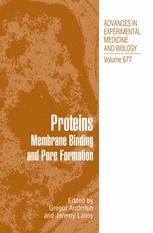

Most ebook files are in PDF format, so you can easily read them using various software such as Foxit Reader or directly on the Google Chrome browser.
Some ebook files are released by publishers in other formats such as .awz, .mobi, .epub, .fb2, etc. You may need to install specific software to read these formats on mobile/PC, such as Calibre.
Please read the tutorial at this link: https://ebookbell.com/faq
We offer FREE conversion to the popular formats you request; however, this may take some time. Therefore, right after payment, please email us, and we will try to provide the service as quickly as possible.
For some exceptional file formats or broken links (if any), please refrain from opening any disputes. Instead, email us first, and we will try to assist within a maximum of 6 hours.
EbookBell Team

4.1
20 reviewsFormation of transmembrane pores is a very effective way of killing cells. It is thus not surprising that many bacterial and eukaryotic toxic agents are pore-forming proteins. Pore formation in a target membrane is a complex process composed of several steps; proteins need to attach to the lipid membrane, possibly aggregate in the plane of the membrane and finally form a pore by inserting part of the polypeptide chain across the lipid bilayer. Structural information about toxins at each stage is indispensible for the biochemical and molecular biological studies that aim to - derstand how pores are formed at the molecular level. There are currently only two Staphylococcus aureus and hemolysin E from Escherichia coli. Therefore, what we know about these proteins was obtained over many years of intense experimentation. We have nevertheless, in the last couple of years, witnessed a significant rise in structural information on the soluble forms of pore-forming proteins. Surprisingly, many unexpected similarities with other proteins were noted, despite extremely low or insignificant sequence similarity. It appears that lipid membrane binding and formation of transmembrane channels is achieved in many cases by a limited repertoire of structures. This book describes how several of the important pore forming toxin families achieve membrane bi- ing and which structural elements are used for formation of transmembrane pores. Our contributors have thus provided the means for a comparative analysis of several unrelated families.